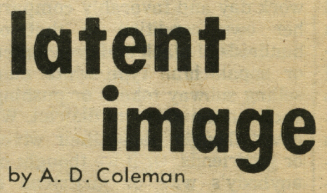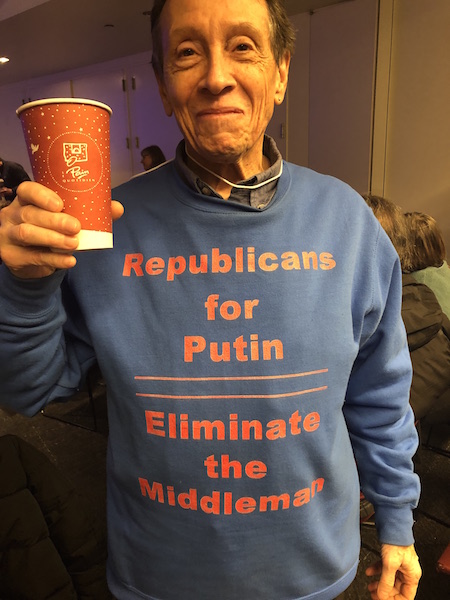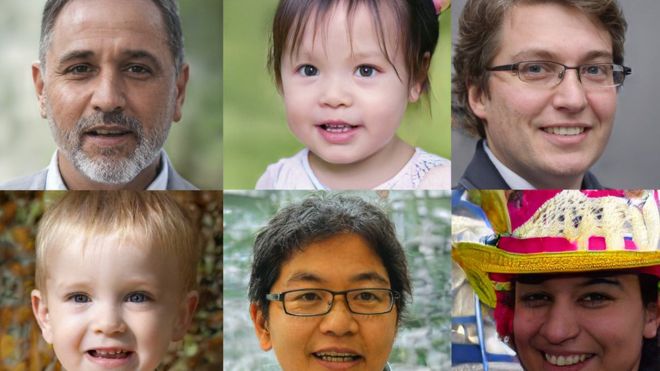 On Groundhog Day 2019, February 2 as always, Staten Island Chuck, our local expert, unexpectedly and coincidentally achieved consensus with his elder, Punxsutawney Phil, predicting an early spring. And we did get a record high of 78F on February 21.
On Groundhog Day 2019, February 2 as always, Staten Island Chuck, our local expert, unexpectedly and coincidentally achieved consensus with his elder, Punxsutawney Phil, predicting an early spring. And we did get a record high of 78F on February 21.
But winter won’t just throw in the towel around these parts, where we’ve had snow, icy rain, and below-freezing temperatures all this month. So we still wear what Anna and I call our bunny suits (that’s long johns to you), bundle up when we go outside, and sometimes don’t leave the house for days. Looking forward to shedding a layer of clothing in the near future.
But it’s all good. Let it snow, let it snow, let it snow. I got myself a brand-new popcorn maker and a new sweatshirt as birthday presents, and Michael Cohen has testified in public for the first time. The hounds of spring are on winter’s traces, and the Special Counsel’s Office has got Donny No-Balls by the yeti pubes.
•
The Tragic Hootenanny
I can’t say how I found myself reading Kevin Fallon’s Daily Beast article about the TV show “Grey’s Anatomy,” which I don’t watch, except procrastination. Whereby I came across this passage, which got me whooping:
Remember when we went to the moon? Us? The same garbage people responsible for the tragic hootenanny that is our country right now?
As one who has searched for three years for le mot juste, the perfect phrase to sum up this moment, I doff my cap to Fallon: “the tragic hootenanny” gets it exactly right, and deserves not just wide circulation but immortalization. In one adjective and one noun he has captured both the gravitas and the ridiculousness of this passage in U.S. history. Hell, if I were writing a book about the Trump era I know right now I’d have my title.
•
A Crowd in the Face
Creepier every day: Via algorithms and a form of crowdsourcing, it has now become possible to generate photographically credible digital portraits of people who don’t exist. Like these:
See the unsigned BBC Technology report “AI fake face website launched,” February 19, 2019. I’ve tried multiple times to access the site thispersondoesnotexist.com, without success, which suggests that it has become so immediately and wildly popular that demand is crashing it.
You’ll find a more detailed explanation in a follow-up story at Digital Trends, “ThisPersonDoesNotExist has spawned a host of amazing copycat sites.” According to them, the system uses “a pair of adversarial neural networks.” Right. In any case, here’s what I know:
• Nvidia created and announced this software.
• They’ve generously made it open-source, so anyone can use it.
• And, according to the same BBC report,
Last week, the Elon Musk-backed OpenAI research group announced it had created an artificially intelligent “writer.”
But the San Francisco group took the unusual step of not releasing the technology behind the project publicly.
“It’s clear that the ability to generate synthetic text that is conditioned on specific subjects has the potential for significant abuse,” the group said in a statement to AI blog Synced.
I don’t which of these scares me more, but be afraid. Be very afraid.
Another Dead Soldier
 I have outlived several dozen publications, domestic and international, but I never thought I’d outlast the Village Voice — already invaluable and on its way to becoming an institution when I started writing for it in 1967. Yet now it’s gone, gasping its last at the end of summer 2018.
I have outlived several dozen publications, domestic and international, but I never thought I’d outlast the Village Voice — already invaluable and on its way to becoming an institution when I started writing for it in 1967. Yet now it’s gone, gasping its last at the end of summer 2018.
 Having just started a prolonged break from production of posts for this blog, I didn’t commemorate the moment, so I now do so belatedly. That’s where I first hung out my shingle as a photography critic almost 51 years ago, and where, for the next five years, I found my footing in the field. We had a contentious parting of the ways, but the opportunity to explore the medium’s field of ideas and my responses thereto at length proved invaluable to me, and I’d like to think it contributed in some ways to the medium’s subsequent emergence as a recognized major art form.
Having just started a prolonged break from production of posts for this blog, I didn’t commemorate the moment, so I now do so belatedly. That’s where I first hung out my shingle as a photography critic almost 51 years ago, and where, for the next five years, I found my footing in the field. We had a contentious parting of the ways, but the opportunity to explore the medium’s field of ideas and my responses thereto at length proved invaluable to me, and I’d like to think it contributed in some ways to the medium’s subsequent emergence as a recognized major art form.
I find the demise of any periodical to which I’ve contributed a sad moment, no matter how minor it proved in terms of circulation and influence. In the last analysis, it’s an honor whenever someone publishes something that you write. So, as a way of marking the occasion and saying farewell, here’s the first of my series of “Latent Image” columns for the Voice, from June 20, 1968.
A Future for the Humanities
I see a trend in the making. From Justin Stover’s “There Is No Case for the Humanities” in the March 4, 2018 issue of The Chronicle of Higher Education through conservative columnist Ross Douthat’s “Oh, the Humanities!” in the August 8, 2018 New York Times, followed immediately by Benjamin Schmidt’s “The Humanities Are in Crisis” in the August 23, 2018 issue of The Atlantic, voices from all sides warn us that, as an historically central component of “higher” or post-secondary education, the territory labeled “the humanities” has entered a pronounced and rapid decline.
Caught as they are between the rock of social promotion and the hard place of exorbitant tuition costs and consequent debilitating student debt, the humanities understandably have a hard time justifying themselves. To the practically minded, they reasonably appear as one vast gut course.
Certainly the little white twits now in the headlines, those whose parents spent oodles of money buying their pampered offspring entry into elite colleges, didn’t have plans to show up on those campi in order to suddenly enter STEM or pre-med programs, aptitudes for which you don’t acquire merely by stepping into a college dorm. Nor would they likely opt for the still rigorous areas of social inquiry, such as anthropology, sociology, or political science, or the more arcane and scholarly aspects of the arts — cinema studies, say, or media theory. Nor would they easily qualify for courses in those performing arts that require actual, measurable skills, like dance and music.
No, they’d have ended up in theater, the visual arts (especially photography), or creative writing — majors that don’t necessarily interfere greatly with pursuing deep interests in college experiences like spring break and tailgate partying.
So it doesn’t surprise me that serious challenge has come to the humanities as a branch of the higher-ed system here. We’ve cut funding for arts programming to the bone in the pre-K-12 school system, after all, not to mention reducing support for literature and the other humanities in those grades. That makes it a rare student who enters college with any grounding in the humanities and any interest in building on that foundation.
Looking at the situation historically, I seem to recall that the biggest expansion of post-secondary education in the humanities in this country came in the wake of World War II, directly consequent to the creation of the GI Bill, which entitled veterans to go to high school and college while supported by government subsidies. That got amplified in the Sixties, when the economy thrived, before we pissed away untold trillions on our misbegotten military venture in Southeast Asia.
In short, “the humanities” as a broad field of study has blossomed when people have sufficient money to live on and enough leisure time to pursue other than practical interests. There’s no “fixing” the humanities in and of themselves, no way of making them viable and financially self-supporting, because the only rationale for their continuance involves arguing for the abstract value of an informed citizenry capable of critical thinking and creative expression. To enable such cohorts in each generation you need to create a sociocultural context in which people can pursue their diverse curiosities without having to make their livelihoods from them in the precariat that has become the norm.
So, if you want to see the humanities flourish, work for and vote for the candidates whose platforms include (a) strong support for public schools at all levels, (b) emphasis on the arts, literature, and media literacy in the pre-K-12 grades, (c) free college for all who qualify for entry, (d) free vocational education for all who qualify for that, (e) forgiving all existing student loan debt, and (f) a guaranteed annual income. I guarantee that a startling rise of involvement in the humanities will result from that mix.
•
Special offer: If you want me to either continue pursuing a particular subject or give you a break and (for one post) write on a topic — my choice — other than the current main story, make a donation of $50 via the PayPal widget below, indicating your preference in a note accompanying your donation. I’ll credit you as that new post’s sponsor, and link to a website of your choosing.
 Include a note with your snail-mail address (or email it to me separately) and I’ll include three (3!) copies of The Silent Strength of Liu Xia, the catalog of the 2012-13 touring exhibition of photos by the dissident Chinese photographer, artist, and poet, who, after eight years of extralegal house arrest in Beijing, finally got released and expatriated to Germany in 2018. The only publication of her photographic work, it includes all 26 images in the exhibition, plus another 14 from the same series, along with essays by Guy Sorman, Andrew Nathan, and Cui Weiping, professor at the Beijing Film Academy. Keep one for yourself, share the others with friends.
Include a note with your snail-mail address (or email it to me separately) and I’ll include three (3!) copies of The Silent Strength of Liu Xia, the catalog of the 2012-13 touring exhibition of photos by the dissident Chinese photographer, artist, and poet, who, after eight years of extralegal house arrest in Beijing, finally got released and expatriated to Germany in 2018. The only publication of her photographic work, it includes all 26 images in the exhibition, plus another 14 from the same series, along with essays by Guy Sorman, Andrew Nathan, and Cui Weiping, professor at the Beijing Film Academy. Keep one for yourself, share the others with friends.








I like your new shirt. Here is a prediction: after losing the next election Pres. Rump will move to Moscow where he will be beyond the reach of New York state law.
No presidential pardon can help him with that one. He has probably already stashed big money there, anticipating 2020 . He’ll spend his golden years erecting one Trump phallic symbol after another, and hanging out with his best buddy, Putin.
After Trump is no longer President, Putin will have no need for him. Donald will have to hang out with his favorite person:himself.